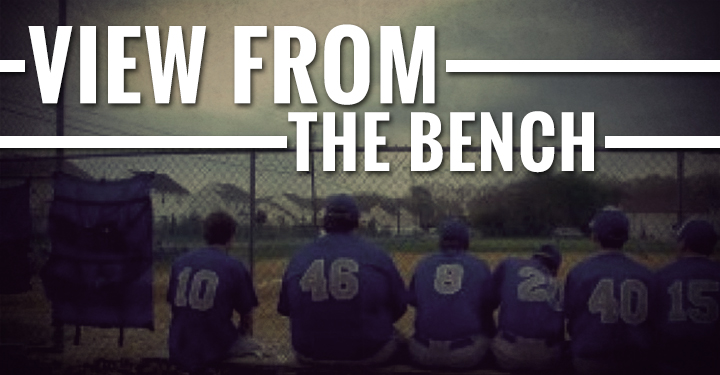The only “contact” contemplated in baseball is between a pitched ball and a swung bat. Baseball’s rules prohibit all sorts of other contact, such as the catcher’s interference rule, the rule that prohibits a base runner from being hit by a batted ball in fair territory, and rules that prohibit a fielder from impeding a runner.
There has been, however, one glaring exception to this no-contact rule; that being, what happens at the plate when a runner attempting to score arrives at or near the arrival of the ball to the catcher. At that moment, almost anything has been fair game, from a catcher completely obstructing the plate from the runner, to the runner barreling over the catcher and intentionally attempting to dislodge the ball.
Catchers are a rare breed. Each season, they start hurting sometime in February and, absent a playoff appearance, don’t start their healing process until October. They enter each game knowing they are going to be “beat up.” This includes being nicked by foul balls, having their left hand pounded by fastballs, being subject to the backswing of a power hitter holding a 34 ounce wooden bat and being forced to imitate “Crouching Tiger/Hidden Dragon” for nine innings, day in and day out. Perhaps worst of all for them is when they have their eye on an incoming baseball while seeing through their peripheral vision the third base coach of the opposing team waving their runner home. The resulting collision of bodies is nearly inevitable, and the prowess of the catcher has often been measured by whether he holds on to the ball after having his bell (and everything else) rung.
The most iconic moment of a catcher’s machismo occurred on October 4, 2003 at the end of Game 4 of the National League Divisional Series between the Giants and Marlins. The Giants were trailing 7-6 with two outs in the ninth inning. JT Snow of the Giants was on second base, representing the tying run. There was a base hit to left field and Marlins’ left fielder Jeff Conine came up throwing. The ball arrived just ahead of the on-coming Snow, and catcher Ivan Rodriguez waited for the inevitable crash. Rodriguez made the tag and then flipped backwards after being pummeled by Snow. As the dust was settling, the gloved hand of Rodriguez was raised up to show that he still had the ball. Snow was out, game over, Marlins win! It was a moment reserved for Hollywood.
There have also been horrible consequences that followed the drama of a play at the plate. A few years back, Cardinals’ catcher Yadier Molina was steamrolled by Josh Harrison of the Pirates, leaving Molina with an injured back, shoulder and neck. A few decades ago, Bo Jackson, one of the greatest athletes I have ever seen, slammed into Cleveland Indian catcher, Rick Dempsey, causing a broken thumb. But the two most infamous incidents involved Buster Posey and Pete Rose. Posey suffered a season ending and career-threatening broken leg in May, 2011, when Scott Cousins of the Marlins tried to reach the plate that Posey had well-guarded. Rose slammed into Ray Fosse of the Indians for the game winning run in the 12th inning of the 1970 All-Star Game, resulting in a collarbone injury to Fosse that is linked to the downturn in what had been an all-star career for Fosse.
On the heels of football’s efforts to address concussions and head injuries, baseball is now reacting to the violence of home plate collisions. There will now be a ban on home plate conduct that was part of the game for generations. A catcher will no longer be permitted to block the runner’s path to the plate and a runner cannot use a catcher for target practice. There will be two levels of enforcement. The first relates to whether blocking the plate or running into the catcher impacted the play. If so, the result of the play can be altered. The second level of enforcement will relate to regulating behaviors. Players violating the rule could be subjected to fines or suspensions.
There have been initial reactions to the proposed rule change. Not surprisingly, Pete Rose has been outspoken against the rule change. As only Rose could do, he scoffed at the rule change and was quoted as saying something to the effect of “What is the game coming to?” He also wrongfully asserted that rules are being made by those who never played the game. Just ask Giants’ manager, Bruce Bochy (a former catcher), who supported the rule change and was quoted as saying that it was just a matter of time for a catcher to become paralyzed from a collision at the plate. Rose could also ask Cardinals’ manager, Mike Matheny, who was reportedly in favor of the rule change as well, particularly given the fact that his playing career was shortened due to the cumulative effect of head injuries from his years as a catcher. The greatest catcher of all-time, Johnny Bench, has tweeted his thanks to baseball for developing the new rule.
Athletes must protect their bodies if they can hope for their short-lived professional careers to be productive. Risking those careers by allowing free reign at home plate is the same as allowing people to speed on icy roads so that we can watch the resulting collision of vehicles. We may not be able to turn our eyes away from the carnage, but that doesn’t mean that we should condone it.
Related posts:
Bruce Richard
Arizona resident for 30+ years and avid sports fan since as long as I can remember. I possess a lifelong passion for sports and it's great traditions.

